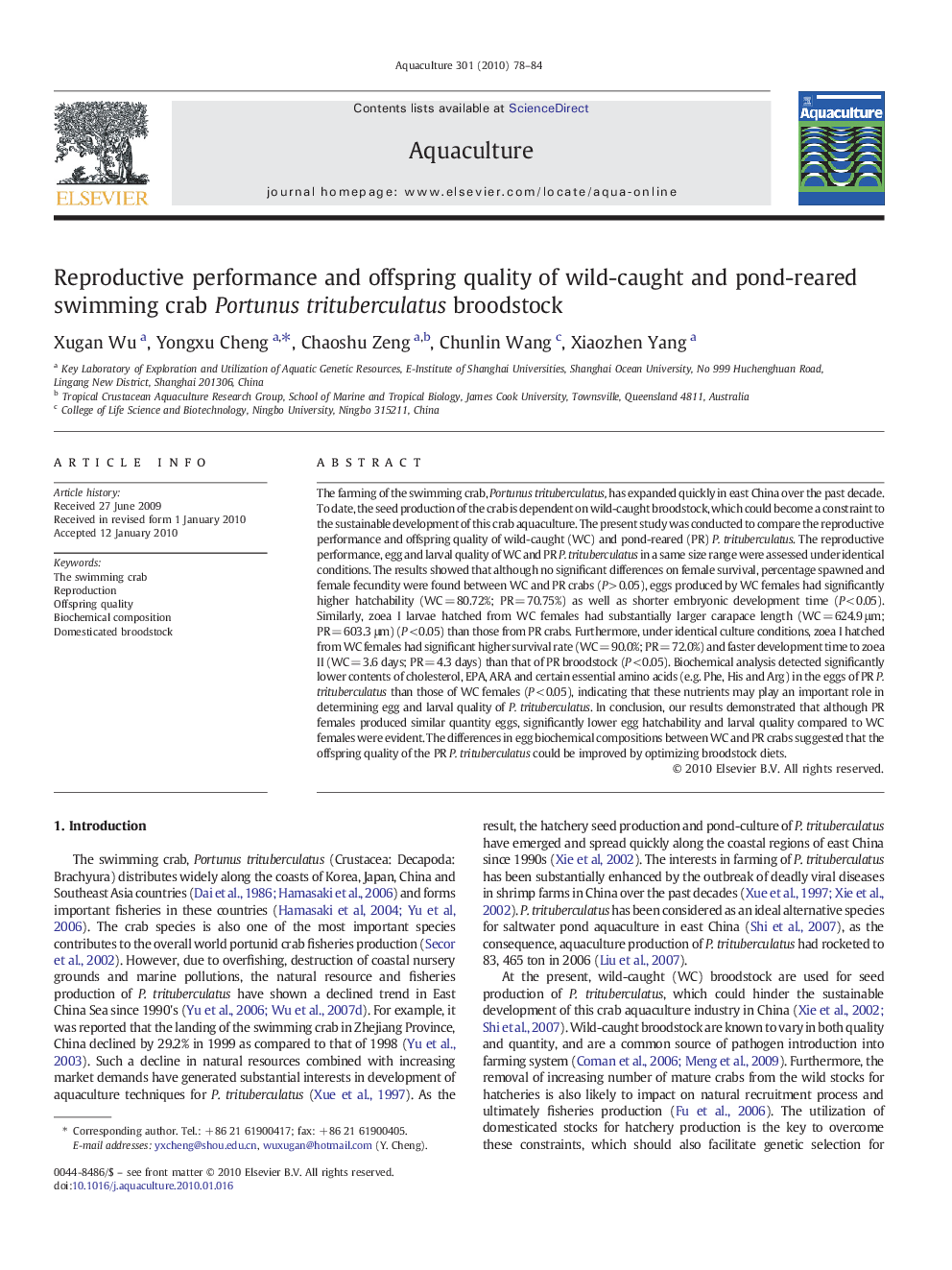| Article ID | Journal | Published Year | Pages | File Type |
|---|---|---|---|---|
| 2423469 | Aquaculture | 2010 | 7 Pages |
The farming of the swimming crab, Portunus trituberculatus, has expanded quickly in east China over the past decade. To date, the seed production of the crab is dependent on wild-caught broodstock, which could become a constraint to the sustainable development of this crab aquaculture. The present study was conducted to compare the reproductive performance and offspring quality of wild-caught (WC) and pond-reared (PR) P. trituberculatus. The reproductive performance, egg and larval quality of WC and PR P. trituberculatus in a same size range were assessed under identical conditions. The results showed that although no significant differences on female survival, percentage spawned and female fecundity were found between WC and PR crabs (P > 0.05), eggs produced by WC females had significantly higher hatchability (WC = 80.72%; PR = 70.75%) as well as shorter embryonic development time (P < 0.05). Similarly, zoea I larvae hatched from WC females had substantially larger carapace length (WC = 624.9 μm; PR = 603.3 μm) (P < 0.05) than those from PR crabs. Furthermore, under identical culture conditions, zoea I hatched from WC females had significant higher survival rate (WC = 90.0%; PR = 72.0%) and faster development time to zoea II (WC = 3.6 days; PR = 4.3 days) than that of PR broodstock (P < 0.05). Biochemical analysis detected significantly lower contents of cholesterol, EPA, ARA and certain essential amino acids (e.g. Phe, His and Arg) in the eggs of PR P. trituberculatus than those of WC females (P < 0.05), indicating that these nutrients may play an important role in determining egg and larval quality of P. trituberculatus. In conclusion, our results demonstrated that although PR females produced similar quantity eggs, significantly lower egg hatchability and larval quality compared to WC females were evident. The differences in egg biochemical compositions between WC and PR crabs suggested that the offspring quality of the PR P. trituberculatus could be improved by optimizing broodstock diets.
